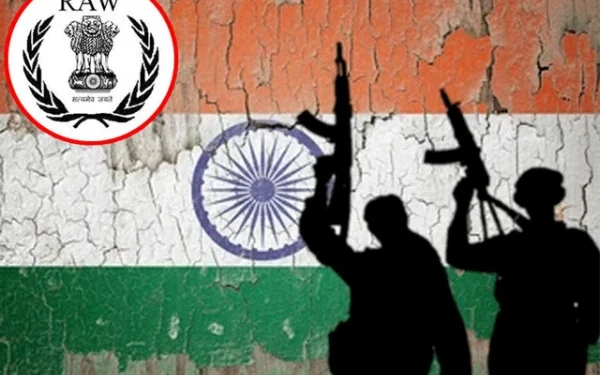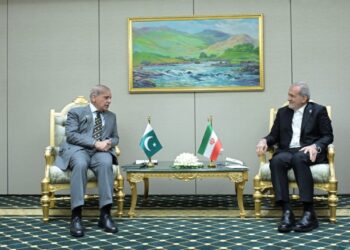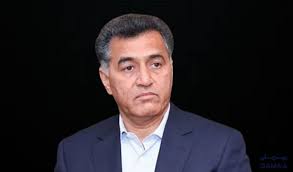Introduction: A Grave Threat to Regional Stability
Islamabad – A major terrorist plot orchestrated by India’s premier intelligence agency, the Research and Analysis Wing (RAW), has been exposed in Pakistan’s Balochistan province. The plan, allegedly aimed at destabilizing the region through coordinated acts of terrorism, marks a significant escalation in hybrid warfare tactics in South Asia. The development underscores growing concerns over foreign interference in Pakistan’s internal security, especially in strategically sensitive regions like Balochistan.
Background: RAW’s History of Covert Operations in Pakistan
The Research and Analysis Wing (RAW), formed in 1968, is tasked with foreign intelligence gathering and covert operations. Pakistan has long accused RAW of orchestrating terror activities within its borders, particularly in Balochistan, which remains a flashpoint for separatist insurgency and sectarian violence. Over the years, Pakistan’s military and intelligence apparatus have pointed to multiple instances where RAW has allegedly supported banned outfits to incite unrest.
The exposure of this latest plot comes in the wake of the failure of India’s purported Pahalgam false flag operation, which was allegedly intended to shift global attention from human rights violations in Indian-administered Kashmir. With that narrative falling apart, security analysts believe India is now redirecting its destabilization efforts towards Balochistan to maintain pressure on Pakistan.
The Unfolding of the Terror Plan
Collaboration with Banned Outfits and Foreign Operatives
According to high-level intelligence sources, RAW has devised a multi-faceted terror strategy involving a mix of local insurgent groups, foreign nationals, and illegal Afghan residents. The banned Balochistan Liberation Army (BLA) and Fitna-ul-Kharij—a radical offshoot with ideological links to extremist groups—are said to be central to the plan. These groups have been instructed to carry out high-impact terrorist attacks in several key cities, including Gwadar, Quetta, and Khuzdar.
Reports reveal that RAW has reactivated sleeper cells and mobilized local facilitators to assist in logistics, reconnaissance, and execution of planned attacks. Alarmingly, the Indian agency has also reportedly transported trained militants from Afghanistan into Balochistan to strengthen the operational capacity of its proxy actors.
Target Reconnaissance and Modus Operandi
Intelligence reports have confirmed that preliminary reconnaissance missions have already been carried out in targeted urban centers. Surveillance suggests that terrorists may employ vehicle-borne improvised explosive devices (VBIEDs) or motorcycle-borne suicide bombers to maximize casualties and disrupt public life.
Such tactics are consistent with past attacks in Balochistan that have targeted security installations, public gatherings, and economic projects. Given Gwadar’s significance under the China-Pakistan Economic Corridor (CPEC), the city is especially vulnerable to sabotage, as its destabilization would also impact Chinese investment and regional connectivity plans.
The Strategic Importance of Balochistan
Balochistan, Pakistan’s largest province by area, holds significant geopolitical and economic value. It is rich in natural resources and forms the cornerstone of the CPEC, a multibillion-dollar flagship project of China’s Belt and Road Initiative (BRI). Through Gwadar Port, Pakistan aims to connect Western China with the Arabian Sea, creating new trade routes that bypass traditional chokepoints.
India has been openly critical of CPEC, particularly the parts that pass through the disputed Gilgit-Baltistan region. Analysts believe India’s opposition to CPEC is one of the driving motivations behind its covert operations in Balochistan. By fomenting unrest in the province, India seeks to undermine Pakistan’s economic progress and strategic ties with China.
Role of Illegal Afghan Residents
Another troubling aspect of the plan is the alleged involvement of illegal Afghan residents in Balochistan. Following the Taliban’s return to power in Afghanistan in 2021, Pakistan witnessed a significant influx of unregistered Afghan nationals. Although Pakistan has initiated large-scale repatriation and registration drives, many undocumented individuals still reside in key urban and rural areas of Balochistan.
RAW’s exploitation of this demographic highlights a security loophole. These individuals can be easily radicalized, recruited, or coerced into participating in subversive activities due to economic desperation or ideological influence.
The Role of the Balochistan Liberation Army (BLA)
The Balochistan Liberation Army has been designated as a terrorist organization by Pakistan, the United States, and the United Kingdom. The group has claimed responsibility for multiple attacks on Pakistani security forces, government buildings, and infrastructure projects, including attempted attacks on Chinese nationals working in the province.
RAW’s alleged coordination with the BLA reflects a long-standing pattern of external support for separatist elements. Over the years, BLA has evolved from a ragtag insurgent group into a well-financed militant organization, often using sophisticated tactics and weaponry not typically available to local actors—fueling suspicions of foreign backing.
Preventive Measures by Pakistani Authorities
Heightened Surveillance and Law Enforcement Coordination
Following the intelligence revelations, Pakistan’s law enforcement and intelligence agencies have swung into action. High-alert security has been enforced in vulnerable districts, while counterterrorism units have been deployed to conduct surveillance and neutralize potential threats. Inter-agency coordination between the Inter-Services Intelligence (ISI), Military Intelligence (MI), and Federal Investigation Agency (FIA) has intensified.
Security checkpoints have been established in and around Gwadar, Quetta, and Khuzdar. Authorities have also launched special operations to identify and detain suspected collaborators and illegal immigrants with links to militant outfits.
Public Awareness and Community Engagement
The government is also engaging local communities through media briefings and public service announcements, urging citizens to remain vigilant and report suspicious activities. Civic leaders in Balochistan have voiced support for national security efforts and called for unity in the face of foreign-sponsored aggression.
International Implications and Diplomatic Fallout
Pakistan’s Foreign Office is reportedly preparing a dossier detailing India’s involvement in cross-border terrorism, which may be presented to the United Nations and other international forums. This move aims to increase diplomatic pressure on India and rally international support against the use of state-sponsored terrorism.
In previous instances, such as the arrest of Kulbhushan Jadhav, a former Indian naval officer and confessed RAW operative, Pakistan has sought to expose India’s covert operations before the global community. This latest development is likely to reignite diplomatic tensions between the two nuclear-armed neighbors.
Conclusion: A Call for Vigilance and Regional Peace
The exposure of RAW’s terror plan in Balochistan serves as a stark reminder of the complex security challenges facing Pakistan. It also illustrates the evolving nature of regional conflicts, where hybrid warfare and proxy militancy increasingly define state interactions.
As law enforcement agencies work diligently to prevent potential attacks, the government must also focus on addressing the root causes of instability in Balochistan—including underdevelopment, unemployment, and political disenfranchisement—to deny hostile actors any foothold in the region.

























